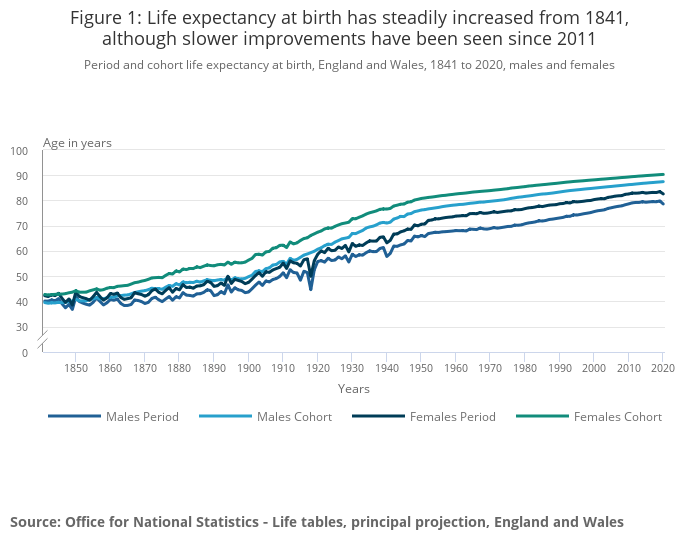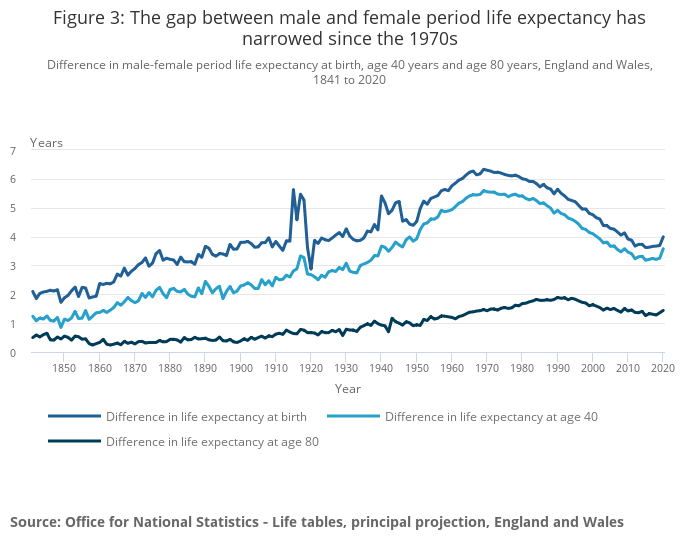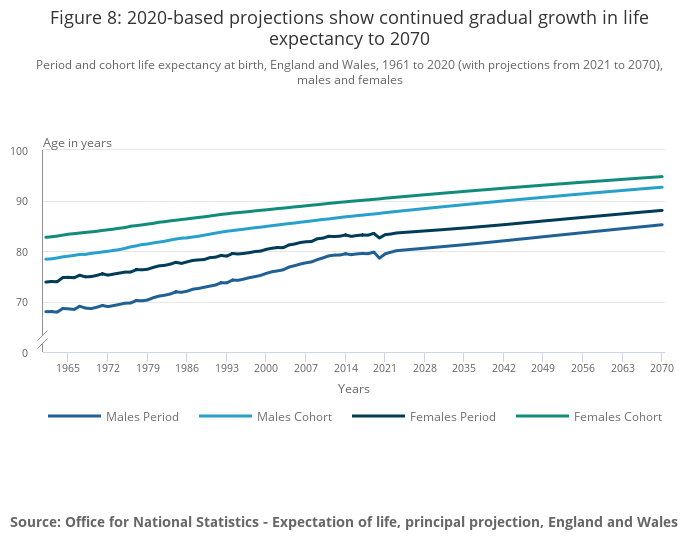Although life expectancy has doubled since 1841, predicted life span is now slowing down in the UK, and the coronavirus pandemic hasn’t helped
New data from the Office for National Statistics (ONS) provides an insight into life expectancy and mortality trends.
Naturally, the COVID-19 pandemic impacted mortality levels in the UK. It is too early to say with any certainty what impact coronavirus may have on long-term mortality trends, but in the last few years, it has undoubtedly influenced mortality.
In 2020, period life expectancy at birth in England and Wales was 78.6 years for males and 82.6 years for females; this is 1.2 years lower for males and 0.9 years lower for females than in 2019. This data reflects very high mortality in 2020 during the coronavirus (COVID-19) pandemic.
A brief timeline of life expectancy in the UK

A lot has changed since 1841, least of all the expected life span. Since 1841, period life expectancy at birth has approximately doubled for both males and females and period life expectancy at birth increased by around 11 years for males and around 8 years for females over the 50 years to 2019. This is before the impact of coronavirus.
In the last 50 years, the modal age of death has risen substantially. Males have seen a greater rise than females. Deaths are also increasingly concentrated in a smaller age range around the modal age at death.
Interestingly, the gap between male and female period life expectancy has narrowed since the 1970s as illustrated in the graph below.

In 2020, average life expectancy was 87.1 years for men and 89.3 years for women
In 2020, the most common age or “modal age” at death was 87.1 years for males and 89.3 years for females in England and Wales.
This means life expectancy for both men and women was lower in 2020 than in 2019 and this is due to increased mortality in 2020 during the coronavirus (COVID-19) pandemic.
Furthermore, life expectancy at birth fell by 1.2 years for males and 0.9 years for females compared with 2019. It is worth pointing out that in 2019, the highest-ever values of life expectancy at birth were recorded.
What’s set to happen in the next 50 years?
In the next 50 years, period life expectancy at birth in England and Wales is projected to increase by approximately 6.6 years for males and 5.5 years for females.
This means that, on average, in 2070 men will live to 85.2 years and females to 88.1 years, an increase of 6.6 years and 5.5 years respectively.
However, improvements in mortality have slowed since 2011. This is visible in slower improvements in projected period life expectancies. Undoubtedly the pandemic will influence long-term mortality trends, but it is too early to say with any certainty what that impact may be.
The graph below depicts the period and cohort life expectancy at birth extended to 2070 using figures from the projected life tables.












